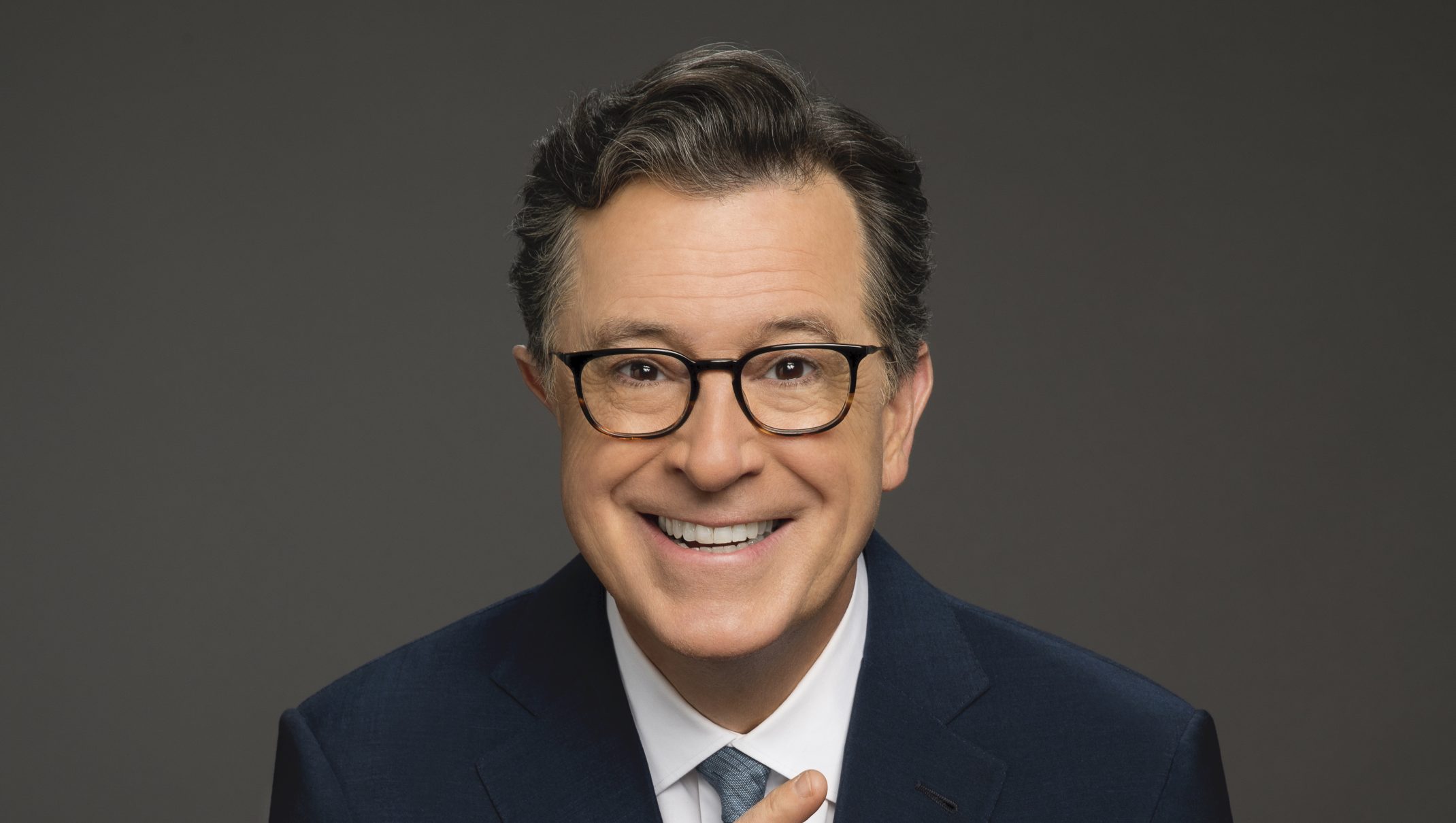The ‘fractional CMO’—inside the rise of marketing gigs that are short by design
As disruption contributes to high turnover and low tenure among marketers, companies are turning to CMOs-for-hire—but some people are uneasy about how it all got to this.

When J-B Weld, an epoxy and adhesive brand that had little awareness beyond a devoted cult of do-it-yourselfers, sought a wider audience, the company encountered something of a sticky situation: Its marketing had also traditionally been do-it-yourself.
With roots as a Texas-based mom-and-pop business that made an adhesive to cold-weld auto parts, J-B Weld had grown behind an evolving range of new products for the home craftsman, relying almost entirely on word-of-mouth marketing and a constant pace of product improvements that delighted its users. With eyes on capitalizing on its advantages, but having never employed a full-time strategic marketer, owner and CEO Chip Hanson turned to a growing solution for undermarketed companies seeking to grow: It hired a temporary, or “fractional,” chief marketing officer.
The company’s move to bring on temporary help in the CMO seat is evidence of a rising trend that, depending on who you ask, is either a smart way to deal with today’s marketing challenges or a warning sign for the future of the CMO role, which some analysts say should remain a permanent gig.
But there is no disputing that the demand for fractional CMOs is rising, creating a cottage industry of firms that specialize in placing part-time marketing execs. While a precise size of the market is difficult to ascertain, the largest U.S. fractional CMO specialist, Chief Outsiders, today employs 110 veteran marketers currently at work at more than 200 companies. The firm has placed its temporary executives on the leadership teams of more than 1,400 companies since its founding in 2009. Its revenue in 2021 increased by 50%, and grew about that much in the first quarter of this year, its CEO said. About 30 new marketers have joined the group over the last 12 months.
Other firms seizing on the trend are CMOx, which has a bullpen of about 50 part-time marketers; Digital Authority Partners, which cited a threefold increase in inquiries this year; traditional executive search firms; and an untold number of freelancers, many benefitting from aftereffects of the “Great Resignation.”
Search volume for the term “fractional CMO” has doubled since 2020, according to Google Keyword Planner data.
Fractional CMO proponents say that its growing popularity speaks to the dramatic impact of unleashing talented professionals on brands in need. Its rise, however, has been met with unease from some marketing industry experts concerned over concurrent trends of high marketing executive turnover, record low CMO tenure, and what they say is a deterioration in the emphasis of strategic marketing leadership at companies, which contributed to having made such a solution necessary.
“I would argue that there isn’t great clarity on the role of the CMO anymore—and that’s how you wind up with fractional CMOs,” said Lisa Mann, a former Mondelēz and Pepsi marketer who today is CMO and managing director of the executive recruiting firm Raines International.
Those in the fractional CMO business acknowledge these realities exist, but would argue theirs isn’t a symptom of a problem so much as a practical and effective cure whose time has come. And temporary executives say the nature of their work represents an expression of the kind of strategic marketing leadership that too many businesses today lack.
Lightning in a bottle
For Evan Eckman, who gained the J-B Weld temporary CMO assignment through Chief Outsiders, J-B Weld proved to be something of a dream gig. In an assignment that would wind up lasting four years—unusually long for a fractional marketer—Eckman uncovered a hidden gem of a brand for which he developed and oversaw its first formal advertising strategy, leading a pitch process won by TBWA\Chiat\Day. Rob Schwartz, chair of TBWA New York Group, was among those J-B Weld superfans, calling Eckman personally within moments of receiving the pitch to express a burning desire to win the account. It all resulted in J-B Weld’s first-ever national advertising campaign starring the actor and offscreen DIY crafter, Nick Offerman, which debuted in 2018.
“Chip Hanson had lightning in a bottle; he had an amazing brand,” Eckman said. “I had never heard of it myself, but as I talked to friends who were DIYers, they lauded it as the most unbelievable product ever. They swore by it. Their fathers swore by it. … This is the kind of brand that advertising agencies dream to be the first to take a crack at.”
Eckman departed J-B Weld and moved onto other temp assignments last year as the company was on its way to becoming the fastest-growing adhesive brand in the U.S.—and an employer of a full-time CMO, Mark Sng, whom Eckman helped to transition to the role.
Eckman describes the fractional life as fulfilling for CMOs who intend to be “life-long marketers” and not use the role as a step toward further ambition in management. It can also liberate them from the interfering drawbacks of corporate life, which Eckman cites as one contributor to high turnover among his counterparts in the profession.
Enter Ad Age's 40 Under 40 at AdAge.com/40u40.
“If you have 20 people on your team, then you’re busy managing people all day,” said Eckman, who prior to becoming a fractional executive served as the full-time CMO of the consumer goods companies Beiersdorf and Hero Group. “You’re attending a lot of meetings, and you’re not doing a lot of marketing. For people who are doing this as their craft, it’s as if you take a fine artist like a painter and say to them ‘We want you to focus on buying paints, brushes and canvases at the best price.’”
High turnover, growing misalignment
If this indeed is a good era to be a part-time CMO, the environment for their full-time counterparts is another story.
According to the executive recruiting firm Spencer Stuart, the average CMO tenure in 2021 was 40 months—or several months shorter than Eckman’s “temporary” stint with JB-Weld. That tied 2020 as the profession’s shortest lifespan in more than a decade, Spencer Stuart noted in an April report. More disconcerting, the report noted, is that CEOs now stay in their jobs more than twice as long as CMOs, a phenomenon the firm noted contributes to further volatility in the role. (Other factors, including efforts to improve diversity, and disruption to industries as a result of the pandemic, have also played a role in CMO turnover, the report noted.)
“The CMO role is very volatile, with high turnover and low average tenure, and has gotten lower,” said Richard Sanderson, marketing, sales and communications practice leader at Spencer Stuart. “As a result, there is a real market demand for interim marketing leadership while companies conduct formal searches for CMOs.”
And with the pandemic ushering in new acceptability for remote work, “the interim CMO-for-hire has become more viable for companies, and more flexible for the fractional CMOs,” Sanderson added.
Mann said she believes the move toward part-time CMOs is a signal of troubling trends that have weakened emphasis on marketing in the business world, including companies that don’t properly value or support marketers, or appoint CMOs with little marketing background.
“CMO tenure is so short today, so what’s the difference between CMO and fractional CMO? It’s almost as if some CMOs, even when they’re trying not to be fractional, turn into fractional,” Mann said. “To me, that says there is a systemic problem.”
Enter the Ad Age Leading Women Rising Star awards at AdAge.com/LWRisingStar—entries close June 8.
Marketers themselves bear some blame for this state of affairs, said Mann, particularly those who cannot align their vision to the CEO’s objectives, or bring their creative energies to bear on them. Plus, digital disruption has dispersed consumer behavior intelligence—once the sole domain of marketing—across functions that once didn’t possess it, like supply chain, and marketers collectively have been slow to adapt, she maintains.
“This makes me sad as a marketer, but there are things marketers have done to hurt themselves in the marketplace,” Mann said. Chief among these, she said, are CMOs “who don’t speak the language of the C-suite.”
The case for fractional CMOs
Fractional CMOs are not for all marketers—or for all companies.
The notion of the fractional executive gained popularity first in the chief financial officer field, pioneered by the executive recruiting firm Tatum, and has been helped along by trends toward private equity business ownership and “asset-light” business models. About one-third of Chief Outsiders’ assignments are with private-equity backed firms, which tend to hold companies for short periods of time, said Art Saxby, co-founder and CEO.
Large enterprise companies—about 10% of Chief Outsiders’ revenue comes from $1 billion-plus businesses—typically turn to fractionals when confronted with the sudden resignation or medical leave of a key marketing leader or find themselves in need of a particular skill set they hadn’t developed internally, Saxby said.
Midsize companies make up the bulk of Chief Outsiders’ assignments, including J-B Weld, chicken chain Zaxby’s, furniture retailer City Mattress, and food brand King’s Hawaiian.
“We’re way too expensive for that $5 million company that wants to get to $7 million. The $10 million company that has a vision for $50 million, but my team can't get me there, that's great for us,” Saxby said. “The $100 million company whose growth rate has slowed down and they need help to change the way they go to market, that's perfect.”
Casey Stanton, founder of CMOx, touts a different approach, primarily focusing on smaller companies for which it trains marketing experts to lend leadership in their chosen industry verticals. He likens the service CMOx provides small businesses–many of which lack the size or profitability to support full-time marketers–to how Uber brought affordable car service to consumers who once couldn't afford such a luxury.
Demand for strategic marketing skills among small businesses has exploded in recent years in part because “it’s never been easier to start a business today,” Stanton said, with online programs like Stripe Atlas and Shopify enabling entrepreneurs to launch businesses overnight, only to encounter a range of marketing complexities few of them anticipate once they are up and running.
Digital Authority Partners primarily focuses on businesses in the $5 million to $20 million range, many of them startups and young companies that are not ready for a CMO, seeing limited results from their own marketing efforts, or are uncertain about which channels to invest in, said Peter Devereaux, head of sales and marketing.
“There’s so much demand for marketing, but many companies can’t afford a full-time CMO: It’s an expensive role,” he said. Typically, its marketers-for-hire run a “hurry-up offense” in the early months, Devereaux said—interviewing stakeholders, and evaluating a company’s analytics, priorities and opportunities to put together an informed plan. Once the company is executing against that plan, the fractional can tail off to as little as a few hours per week. “The beauty of it is it is a scalable solution,” he said, allowing companies to access “on-demand” marketing without a significant hit to overhead.
Midsize companies typically call for a fractional CMO “when they get to a point where the CEO is frustrated,” said Saxby. “They know there’s an opportunity for growth but they’re not sure how to make it happen, and there’s not anyone on their leadership team who’s ever done it.”
Others may seek fractional help to “try before you buy,” or when seeking discrete expertise. The aftermarket auto-parts firm K&N, for example, employs its own CMO but called on Chief Outsiders to secure a marketer with deep digital experience to tackle a crisis associated with a failed website re-platforming.
'Loving their lives'
Most assignments to Chief Outsiders come via peer or private-equity referrals; the company also markets its own services through various thought leadership and online content activities. The firm's partners and associates also bring in business through their personal networks. Its marketers who get placed receive a percentage of the firm’s deal with the company; with partners earning larger percentages and bonuses than newer-arriving associates.
“Our top people are making way more than they ever made in corporate America,” Saxby said. “Some people are making about the same, but they’re loving their lives. They love to be able to say 'I'm interested in this project, but I don’t want that one.' They can focus on the projects they are passionate about. They love to jump in and make big things happen. And they get to do it again and again.”
Some observers tend to see the role of fractional marketers as a kind of glorified freelance—or marketers who turn to consulting while keeping another eye on the full-time job market. Collections of them provide an umbrella and a platform. “I suspect that [fractional CMOs] have different motivations and desired outcomes,” said Sanderson. “For example, I believe there are some that are very happy with occasional consulting work, and then there are those who are still in active search mode for a full-time role, and being a fractional CMO provides stop-gap employment and income, and keeps them contemporary in the market without the hassle of setting up their own LLC or consulting company.”
Saxby says turnover among Chief Outsiders’ roster is quite low, and standards to be accepted as a member are high. All 110 of the marketers currently participating previously worked as a VP of marketing or higher at an operating company–many are Fortune 500 veterans. Saxby himself is a former VP of marketing at Imperial Sugar and served in brand manager roles at Coca-Cola Co., Kellogg Co. and Frito-Lay, and said he was inspired to start Chief Outsiders from results of the work he’d since done in bankruptcy turnarounds.
“I realized I could take the strategic marketing leadership I’d learned in these big companies, and when I applied that to a mid-sized company, boy, could I make a difference,” he said. “I was never able to double the size of a Coca-Cola—but I could make a very big difference at these smaller size companies.”
The power of the tribe
Every two weeks, Chief Outsiders’ marketers meet via Zoom to discuss assignments and share their learnings and needs. This practice fosters a kind of accelerated learning rarely available to marketers in full-time assignments, its participants say, while assuring Chief Outsiders can deploy the right people to solve the problems of its clients (the company also monitors net promoter score surveys from client companies to assure the cultural fit is right, Saxby said).
“We have 100 or so CMOs to draw from for experience, so if I go in and work on a particular area of marketing, and I’m not a branding specialist, I have access to all these minds who are branding specialists,” said Scott Koerner, a Chief Outsiders partner. “There are a multitude of benefits from a program like this. That’s why I became what I became there—because of that opportunity.”
Koerner, whose previous full-time work included a stint as a CMO of the footwear company Shoes for Crews and the developer of Michaels Stores’ e-commerce business, served a 20-month stint addressing the e-commerce crisis at K&N as a Chief Outsiders representative, working alongside K&N’s full-time CMO, JR Badian.
K&N’s issues involved a website update that according to Koerner was not executed properly, making navigation difficult for customers who use the website to read up on K&N’s 10,000-plus lineup of model-specific aftermarket air filters, oil filters, intakes and performance products before buying them online, or in auto parts stores. Sales had cratered “dramatically,” Koerner said, but stabilized in about 90 days before growing again. The rest of his assignment involved a strategy to maintain performance, and onboarding a full-time digital specialist to take over following his departure.
Badian said he would not likely consider a fractional career himself, citing a preference for setting and executing strategy over the long term, rather than what he sees as the project-based assignments and short-term tenures more typical of fractional CMOs. But for K&N, a fractional executive with specialized experience proved a good solution to a challenging issue.
“The truth is there is a lot to be said about tribal knowledge, having people who have contextually relevant experience,” Badian said. “If you look at the medical field—some physicians are general MDs, yet many have specialties. Well, because there are so many fields within marketing these days—brand, paid media, technology, data, pricing, innovation, to name a few—by default, many CMOs have really become general marketing practitioners.”
Get your tickets for the 2022 Leading Women event, held in New York on Aug. 9
Philippe Harousseau, who had a long career as a marketer with companies such as Unilever, Materne North America and Shiseido, joined the Chief Outsiders’ roster weeks ago, saying he was anxious to draw on his experience to shape strategy for smaller players and that he had turned down a full-time CMO opportunity to do so.
“When I joined, I had heard about the power of the tribe, and being able to tap into that power—it’s not a selling point, it’s a gem,” he said. “Being a CMO can be a bit lonely sometimes—I’ve been there. In this concept, you don’t feel lonely because you have 110 people. We all know how to shape a vision, but we all have different specialties. That can make you smarter. It complements your skills.”
Are CMOs becoming extinct?
In some ways, the trend toward fractional executives mirrors the change in the way younger people are looking at their careers—as a series of specialized projects on their own terms, or “gig work”—brought about by the influence of technology and accelerated by changes due to the pandemic. Those same forces have tended to bring about the shortening tenures of full-time CMOs.
Debate remains, however, as to the degree to which this is a good thing for marketing.
Many fractional executives will say that change is already such to have rendered the “full-stack” CMO a relic of the past. “It may have existed 10 or 20 years ago, but it doesn’t exist today,” Eckman said. “What I have observed is that CEOs hire someone they think is a great marketing leader and they may have a skill set that’s aligned to the particular CEO and their needs. But over the course of the business cycle, those needs change and that CMO just doesn’t have the skillset to pivot to the new business needs. The speed of change has accelerated, especially in these last few years.”
Mann, the former corporate CMO now at recruiter Raines, said that both companies and marketers must rethink their approaches amid change, and reestablish the prominence of marketing in business—without necessarily surrendering marketing to a kind of freelance work or sending a signal to companies that undermarketing is an easily solved problem.
“A great CMO can drive profitable top-line results and fly at a number of altitudes in one day—but that means having to speak the language of the C-suite and also having a depth of understanding of digital,” Mann said.
Companies need to address a business culture that has de-emphasized the role of marketers and estranged top executives and top marketers, she said. A global mapping study undertaken by Raines last year revealed that only 44% of CMOs are considered members of their firm’s executive teams; 23% of CMOs feel their CEO doesn’t understand their job; and 21% feel they are not sure they are aligned with their CEOs on key metrics to measure performance.
“The real killer,” she added, “is that 50% of newly appointed CMOs have non-marketing backgrounds, typically from strategy.”
Marketers, too, need to up their game by applying their skills and creativity to align with their CEO’s vision, even as that undergoes change—and learning to aggregate consumer behavior information that has blown itself across departments in the digital boom. This will help create a culture of management and marketing cooperation that will help companies succeed, and bring some stability back to the increasingly peripatetic careers of marketing pros, Mann said.
“I think everyone wants to belong somewhere,” she said. “The older I get, the more I realize culture-building is a part of the conversation than I might have thought when I was younger.”
Don’t miss the latest news. Sign up for Ad Age newsletters here.

 Tekef
Tekef 































